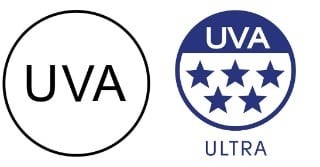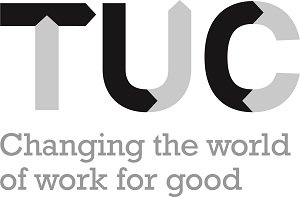SPF is PPE

During summer, the risk of sun exposure and damage to the skin is higher. During the summer months, the Earth's tilt results in Britain being closer to the sun, leading to longer daylight hours and higher sun angles. Most of us enjoy the clear skies and warm weather, but it does mean that the sun's ultraviolet (UVA and UVB) rays are more intense. UVB rays are responsible for causing sunburn and can penetrate the skin's top layer, leading to damage and risk of skin cancer.
This guidance will give you more information about SPF and how to convince employers to provide SPF sunscreen for workers.
Skin Cancer Risk
There are three main types of skin cancer: basal cell carcinoma, squamous cell carcinoma, and melanoma. Outdoor workers, such as construction workers, postal workers, agricultural workers and more have an increased risk of developing these types of skin cancer due to their exposure to UV radiation.
Skin cancer risk is cumulative, meaning that the more time a person spends in the sun without protection, the greater their risk becomes over time. Even short periods of intense sun exposure can add to this cumulative risk.
Occupational risk
Many jobs require work to take place outdoors, with risk of sun exposure, and mitigations should be in place to protect workers. The links to work are clear: studies have shown that workers who regularly work outdoors are three times more likely to be diagnosed with skin cancer. Sunburn and skin discomfort can also reduce an employee's ability to perform their job effectively.
There are a range of control measures which can be used in workplaces, such as protective clothing, sunglasses, and adapting working patters. More information on mitigations for working in hot weather can be found here; the rest of this article will focus specifically on sunscreen. If skin cancer is an occupational hazard, then SPF is PPE!
Sunscreen as a Barrier
SPF stands for Sun Protection Factor, and the SPF number tells you how long the sun's UV radiation would take to redden your skin when using the product as directed versus the amount of time without any sunscreen. Sunscreen with a high SPF rating acts as a barrier against UV radiation. It helps to absorb or reflect the UV rays and is effective at reducing the skin's exposure and the risk of sunburn and skin damage.

When selecting an SPF, you can look out for the icons above which indicates that the product meets EU standards.
Personal Protective Equipment
SPF sunscreen should be considered a form of Personal Protective Equipment (PPE) by employers for outdoor workers. In Britain, the relevant health and safety legislation is primarily governed by the Personal Protective Equipment at Work Regulations 1992 (PPE Regulations). These regulations outline the legal requirements for the use of PPE in the workplace and are an essential part of ensuring worker safety. Employers have a legal obligation to provide suitable PPE to their employees who may be exposed to risks that cannot be adequately controlled by other means. PPE should be provided free of charge.
Employers must ensure the safety and health of their workers. This includes protecting them from known hazards in the workplace. If a risk assessment demonstrates that outdoor workers are exposed to UV radiation as part of their job, then UV radiation is a known occupational hazard, a significant risk factor for skin cancer and other skin-related health issues and providing SPF sunscreen can be seen as a necessary mitigation and requirement to fulfil an employers’ legal requirements.
Employers should not only provide sunscreen but also educate their workers on its proper use, including application and reapplication. To maximise its effectiveness, workers should apply a generous amount to all exposed skin, even on cloudy days, and reapply it every two hours, especially if they are sweating or in water.
Employers must:
- Conduct a risk assessment to identify workplace hazards and assess whether PPE is necessary to protect workers from those hazards.
- Select PPE based on the identified risks and the needs of the individual worker. It must be suitable for the specific risks and the working conditions.
- Provide employees with information, instruction, and training on the proper use, storage, and maintenance of PPE.
- Consider PPE as the last line of defence against workplace hazards, using control measures to remove and reduce exposure first.
- Trade union representatives can take several steps to convince employers to provide SPF sunscreen to workers:
Gather Information and Data:
- Remind the employer of legal obligations to provide a safe and healthy work environment, including protection from known hazards like UV radiation.
- Begin by collecting data and information on the risks of sun exposure for outdoor workers, including statistics on skin cancer rates among this group.
- Highlight the legal and ethical obligations of employers to ensure the health and safety of their workers.
- Provide cost estimates for providing SPF sunscreen compared to potential healthcare costs associated with skin cancer treatment.
Highlight Industry Standards and Best Practices:
- Emphasise any industry-specific guidelines, standards, or regulations that recommend or require the provision of sunscreen as part of occupational health and safety measures.
- Provide examples of other employers that have implemented similar sunscreen provisions successfully.
Educate on Health and Safety Benefits:
- Explain how providing SPF sunscreen can contribute to a healthier and safer work environment, reduce the risk of skin cancer, and protect workers from sunburn and other skin-related issues.
- Highlight the long-term benefits of preventive measures.
Engage Workers:
- Involve workers in the discussion and decision-making process. Gather testimonials from members, conduct surveys or polls to gauge worker interest and concerns related to sun protection.
- Use your union's communication channels to raise awareness about the importance of SPF and gain support from fellow union members.
Legal Compliance:
- If applicable, remind the employer of legal obligations to provide a safe and healthy work environment, including protection from known hazards like UV radiation.
Consider Further Action:
- If negotiations fail, seek assistance from relevant authorities to ensure compliance with occupational health and safety regulations.
- Use SPF as an organising initiative in the union and bring members together to discuss action and leverage over this issue.
Case studies
During the Covid-19 pandemic, many employers were quick to provide workers with hand sanitiser free of charge. The pace to provide SPF to outdoor workers has not been as fast, but thanks to unions recognising this need, and making the demand to employers, many are now rolling out provision:
- At one large house builder, sunscreen dispensers are provided in all site welfare facilities, and a yearly skin cancer campaign is run, thanks to the efforts of Unite union members.
- Frontier Agriculture, whose workforce spends long periods outdoors working in crop production, are provided SPF by the employer.
- London Underground workers whose job requires them to be on the gate or exposed platforms are provided SPF by their employer after RMT safety reps pointed out the risks.
- Employees at the Health and Safety Executive’s research centre, and at the Environment Agency, are provided SPF.
- Many schools provide SPF to teachers, teaching assistance and mid-day assistance where there is an expectation of outdoor work – some also make SPF available to pupils.
- Workers at a chain of rooftop cinemas are provided SPF by the employer.
We had a safety briefing that highlighted the importance of wearing sunscreen. After briefing I looked up sunscreen to see if it was in our general procurement catalogue and so easily ordered. It was so I asked my line manager saying that if company thinks it is important PPE then surely company should provide it. He agreed and we got enough tubes for my team of 20.
Stay Updated
Want to hear about our latest resources for union reps?
Sign up now to get it straight to your inbox
